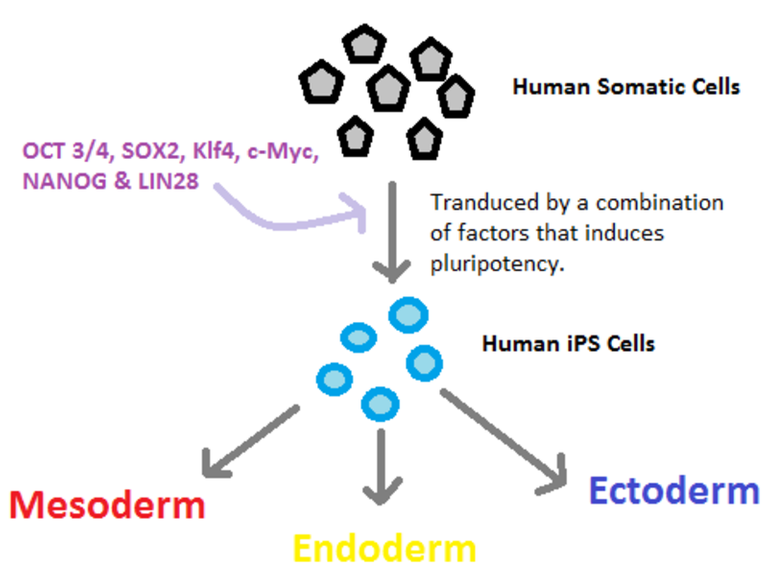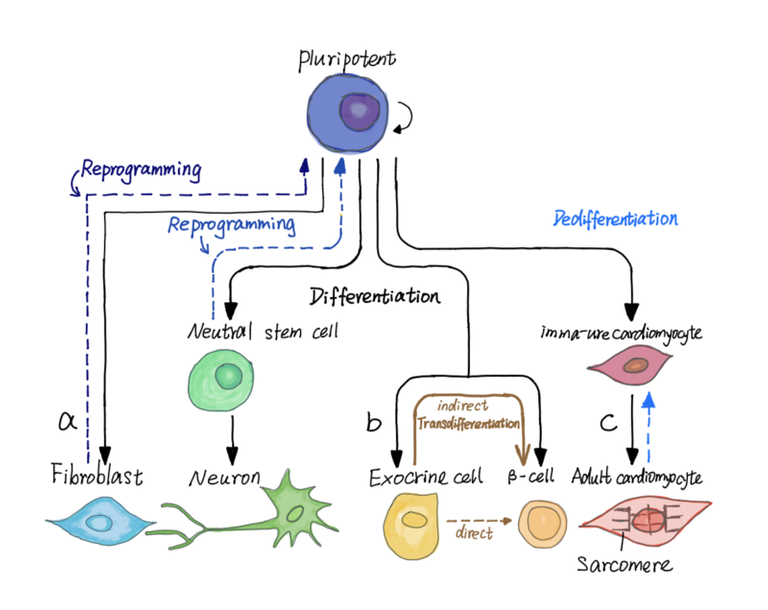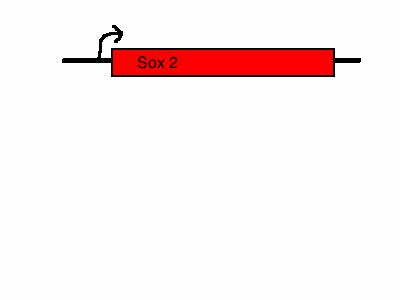There is nothing as sweet and biologically rich in nutrients as the Yamanaka Cocktail: Interested? Come and learn
Welcome back from the short break. In our previous discussion, I introduced you to the concept of cellular reprogramming but not detailed enough for you to appreciate the concept. You can read the article here - The pursuit for age reversal in humans by scientist: Is this really necessary and worth the efforts? Today, I intend to expose you to the real deal about this concept and how interesting it can be. The ingredients required to carryout cellular reprogramming are as important as those needed for cooking real food. Before I go deeper into the discussion, let's give credits to whom it is due. I am talking about no other person than Professor Shinya Yamanaka. Read on and you will understand better.
We are now living in the world of limitless possibilities. Those things that seem impossible, the insatiable desire of man, will go any length to defy that odds and make that thing possible. As time goes by, it only gets clearer to me why we are referred as demi-gods. Professor Shinya Yamanaka did the supposed impossible by many in the year 2006, when he was able to convert a somatic cell (a differentiated cell) to a pluripotent cell (undifferentiated cell). No one thought this was possible, until it was done by this man and his co researchers.

Overview of iPS cells: pluripotent stem cells can differentiate into the 3 main germ layers we have
Though the experiment of Yamanaka was greatly influenced by some research like the Dolly experiment, in which a group of researchers revealed the possibility of genetically modifying a somatic cell's nucleus. This was done by transferring the contents of the nucleus in the somatic into another enucleated cell (cell in which its nuclei content has been removed. This was the earliest history of cell reprogramming.
This technique of transferring the nucleus of a somatic cell to another cell, mainly a blastocyte or an oocyte, which already has their nucleus removed is known as Somatic Nuclear Cell transfer, (SCNT). The idea behind this technique, bothers around the the fact that, blastocytes and oocytes are early cells of embryogenesis and are thus undifferentiated cells. That is, they are yet to have a definite function, unlike the somatic cells which are already fully differentiated.

Somatic Cell Nuclear Transfer (SCNT)
Since the somatic cell contains the desire gene we want and we need a system that would help us propagate this gene through replication and cell division, injecting their nucleus which contains the gene into the actively dividing blactocyte or oocyte, is the only way to guarantee that we will have clones of the cells containing the desired gene of our interest. In other words, the blastocytes are the vehicle that drive the duplication of the gene. This technique was shown to produce cells with pluripotency potential.
Another interesting prior research that influenced the idea of Yamanaka, was cellular reprogramming experiment that demonstrated the possibility of fusing an embryonic stem cell (ESC) with a somatic cell. The fusion between this two cells, which of course are undifferentiated and differentiated cells respectively, yielded pluripotent cells with the potential of self replication and self renewal. This then begs the question, what really is responsible for driving the pluripotency of the somatic cell when it is fused with the undifferentiated cells. This is where Yamanaka drew his idea from and decided to do his finings.
Fast-forward to 2006, he did some work with mice in which he reprogrammed their fibroblast (a differentiated cell) into a pluripotent stem cell (undifferentiated cell) that can develop or produce different types of cells. Under normal circumstances, cells matured from undifferentiated cells with no specific functions to differentiated cells with specific function and not the other way round. So reversing the mechanism is just like turning back the hands of time.

Overview of Reprogramming, transdifferentiation and dedifferentiation
Incase you really don't get the gravity of this, imagine your hand that has been fully formed and then re-engineered to produce new hand and even other features aside the your hand or even reprogramming the cells of your eyes to produce a complete new eyes. Yeah, as shocking as it is, the possibility is there. The major challenge is accurately identifying those factors that play significant role in the regeneration process and the conversion of the adult and fully matured cell back to pluripotent (early) stage.
This is what Yamanaka and his colleague did in their experiment. Fortunately for Yamanaka, he was able to identify the main factors aka genes that drives pluripotency in cells. The genes/transcriptional factors that were first discovered to be responsible for pluripotency induction when they worked with mice included (Oct3/4, KIf4, Sox2, and c-Myc).
Upon further research using human somatic cells, they discovered that specifically, these four genes – Oct4, Sox2, NanoG, and Lin28, when included, will induce the conversion of matured adult somatic cells into pluripotent stem cells. The combination of this factors used in inducing a matured adult cell (somatic cell) back to pluripotency, is what is referred to as the Yamanaka cocktail Just as the name implies, it was named after the discoverer.

IPS cell formation
Sorry to disappoint you if you were actually thinking of real eatable dish, haha. Yamanaka referred to the cells he produced through this cellular reprogramming technique as induced Pluripotent Stem cell, (iPSC). Till date, their has been great improvement and wide applications of this technique most especially in the field of tissue engineering and regenerative medicine. There has been a lot of products made out of this technique which has greatly impacted humans greatly. We will look at them later in another article, you sure will be amazed.
Closer look into the Yamanaka Cocktail and pluripotency induction
The Yamanaka cocktail just as we earlier mentioned, contains transcriptional factors (regulatory molecules that are needed to activate the expression of genes) or genes that drive a mature cell back into a stage pluripotency. The complete list includes Oct3/4, KIf4, Sox2, and c-Myc, Nanog, LIN28, and lastly Glis1. Identifying these factors were the main foundation of Yamanaka's discovery. Each transcriptional factor have their specific roles but among them all, without Oct3/4 and the Sox gene family, it is impossible to induce a somatic cell back to pluripotency.
In essence, both Oct3/4 and the Sox must be present for induction to happen. The remaining factors play the role of improving the efficiency of the induction, since they are still needed to complement the effects of Oct3/3 and Sox. The procedure for pluripotency induction is not as complicated as it may seem, however, it does require great level of expertise.
To induce pluripotency, first thing first, you will need as usual, a fully differentiated cell (somatic cell) you want to induce to pluripotency. You will also need a carrier vector to deliver the genes that induce pluripotency e.g. the Oct3/4, Sox2, Klf4 and c-Myc. Viral vectors are commonly used cellular reprogramming because they are usually more specific for their target cell. Note, there are actually different approaches to pluripotency induction, and one commonly used is the direct reprogramming.
Very importantly, I think its important you know this. When cells are directly reprogrammed to form cells of another lineage, this is referred to as Transdifferentiation. In direct cell reprogramming, the cells are simply converted in-situ (i.e. directly inside the tissue) without having to pass through any intermediate state of pluripotency. For example, directly reprogramming a fibroblast (somatic cell) into a cardiomyocyte (a cardiac or heart tissue).
If we are intending to produce a pluripotent cells, its just similar, you introduce the transcription factors directly into the somatic cell which will then induce the pluripotency. This type is referred to as dedifferentiation, just like reversing differentiation.

Overview of Reprogramming, transdifferentiation and dedifferentiation
Induction of pluripotency is a real deal and it is on this premise that scientist are aiming at initiating age reversals as we previously discussed in the last article I wrote. cellular reprogramming offers a lot to us a humans. One of the most important application of pluripotency induction is in organ regeneration. Once the cells have been induced to pluripotency, they can then be cultured and grown in the laboratory.
Research is still on going as far as I know regarding the use of laboratory cultured organs in humans. So far, they have been successful in rats and other animals with kidney or liver failure. So far, there have been great successes in the generation of functional kidney and liver cells from iPSCs which have been well used to create functional liver and kidney tissues in laboratory animals. This is how promising cellular reprogramming can be.
Why it has not been fully adopted in human use, is mainly due to concerns about the safety of these cells. Tissue rejection is always a significant factor to be considered when we talk about organ transplantation or creation. Human immune system is very complex and the chances are high that, these organs created from the laboratory or the induced pluripotent stem cells could cause graft versus host reaction in the recipient.

organ regeneration example from induced pluripotent stem cells(iPS cell)
Another major fear, is the risk of cancer. some of the factors used in inducing pluripotency are well known oncogenes (molecules that are indicated to be contributory to cancer formation). Even the viral vector used in delivering the transcriptional factors are also known to have link with oncogenesis.
The retroviruses used in the generation of iPSCs are associated with cancer because they insert DNA anywhere in a cell's genome, which could potentially trigger the expression of cancer-causing genes. Another risk associated with iPS cell technology applied to humans is the fact that c-Myc, which is one of the genes used in reprogramming, is a known oncogene whose overexpression could also cause cancer.
These are some of the fears that have so far limited the application of these procedure in humans. However, I believe in time to come, a better and safer way to apply this procedure in humans safely will be found. So in the meantime, these whole procedures are mainly limited in experimental animals. Though there are less complicated ones that have been used in the treatment of cancer, but this is strictly associated with cellular reprogramming involving cell engineering and not pluripotency induction. They both share similar feature but are really not the same thing.
The most common you can think of the CAR-Tcells used in the treatment of liquid cancers. CAR T-Cells are engineered T-cells that are equipped with chimeric antigen receptor to recognize and destroys cancerous cells in patients with some leukemia. I have long before now, crafted the post. You can read more about this interesting technique here - Catching up with the Chimeric Antigen Receptor T-cell therapy for Cancer treatment: Cancer cure is no longer far. You sure will be happy you read that article.
Summarily, iPSCs are still mainly used in research studies and they help modelling disease patterns. This makes it far more easier to understand diseases without having to use live patients most times. Reversing cells back to their primitive stage is no longer a fantasy, it is a reality. The ingredients of Yamanaka cocktail is all you need to initiate this process.
That will be all for today, I hope to sooner than later, introduce you to the laboratory created human blood, a product made from pluripotency induction. Bye for now and thanks for the read, you are +1 richer in knowledge now I guess.
Feed old cells Yamanaka cocktail and see them grown young!
References
•Somatic Nuclear Transfer
•Selective killing of leukemia cells: Yamanaka factors’ new trick
•Excluding Oct4 from Yamanaka Cocktail Unleashes the Developmental Potential of iPSCs
•Yamanaka factors…the key to the fountain of youth?
•Yamanaka factors – four factors that could changing aging research, our biological age and life itself
•Excluding Oct4 from Yamanaka Cocktail Unleashes the Developmental Potential of iPSCs
•Methods for making induced pluripotent stem cells: reprogramming à la carte
•A Review of the Methods for Human iPSC Derivation

❤️
It sounds like a sci-fi movie even to the scientist who may not necessarily have any good backgroup in biology or biochemistry or bioengineering os something like that, but this is probably the future of science and stem cell technology is currently doing amazing things for people from what i have read about some programs and i'd love to see how the future would be in the next decade or two.
This was one of the best reads so far for me this week, and i am glad i got the opportunity to do so, thank you Sir
Definitely, there is a lot in store for humans. We are gradually breaking the boundaries of limitations.
Thanks for the read and compliment. it's soul lifting.
Congratulations!
✅ Good job. Your post has been appreciated and has received support from CHESS BROTHERS ♔ 💪
♟ We invite you to use our hashtag #chessbrothers and learn more about us.
♟♟ You can also reach us on our Discord server and promote your posts there.
♟♟♟ Consider joining our curation trail so we work as a team and you get rewards automatically.
♞♟ Check out our @chessbrotherspro account to learn about the curation process carried out daily by our team.
🥇 If you want to earn profits with your HP delegation and support our project, we invite you to join the Master Investor plan. Here you can learn how to do it.
Kindly
The CHESS BROTHERS team
❤️
Thanks for your contribution to the STEMsocial community. Feel free to join us on discord to get to know the rest of us!
Please consider delegating to the @stemsocial account (85% of the curation rewards are returned).
Thanks for including @stemsocial as a beneficiary, which gives you stronger support.
❤️
I thought from the title it was gonna be an actual nutrient-rich cocktail recipe 😅
lol, you bet. Most persons would have thought the same thing. Sorry to disappoint you in that regard, 😅
The topic almost made me felt like it's one nutrients that I have never seen before and I need to know about it but on reading through it, I just had to appreciate your work in research, you're doing well to make serious research and also telling us about it. Prof Yamanaka has done a great job here on planet earth. His discoveries in research are top notch and educational. Thank you for drawing our knowledge to this.
Indeed!
There is more to what we are yet to see.
Seems you are yet to resume writing i guess.
Nah, I'm on it